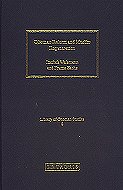|
|
|
Ottoman
Reform and Muslim Regeneration: Studies in Honour of Butrus Abu-Manneh Edited by Itzchak
Weissman and Fruma Zachs |
|
|
… As the matrix of the
Middle East, the 'long nineteenth century' of Ottoman History, from the
seminal treaty of Kucuk Kaynarca in 1774 to the demise of the empire in 1918,
has received sample scholarly attention. Similar to what occurred in studies
of other regions of the world, this research underwent a substantial shift
from the traditional/modern dichotomist presentation typical of theories of
'modernization', to a more nuanced understanding of the continuum between
them. By this process, the earlier emphasis on the influence exerted by a
progressive and dynamic West on basically static and backward non-Western
societies such as the Ottoman gave way to a more perceptive analysis of the
in |
|
|
The present volume
seeks to make a contribution to the research on the late Ottoman period from
two complementary aspects. One is the evolution of the Ottoman state reforms
as it was perceived from various perspectives. The other aspect is that of
Islamic rege |
|

